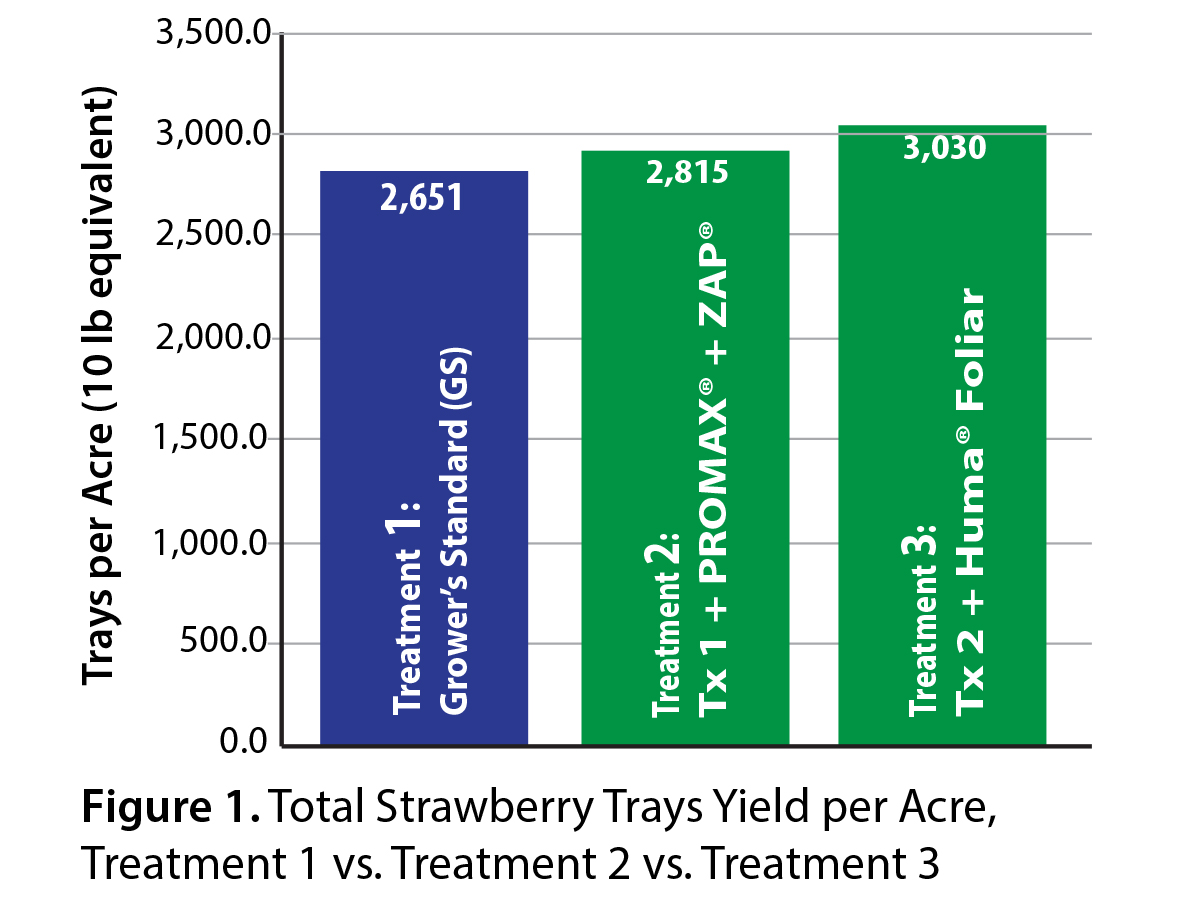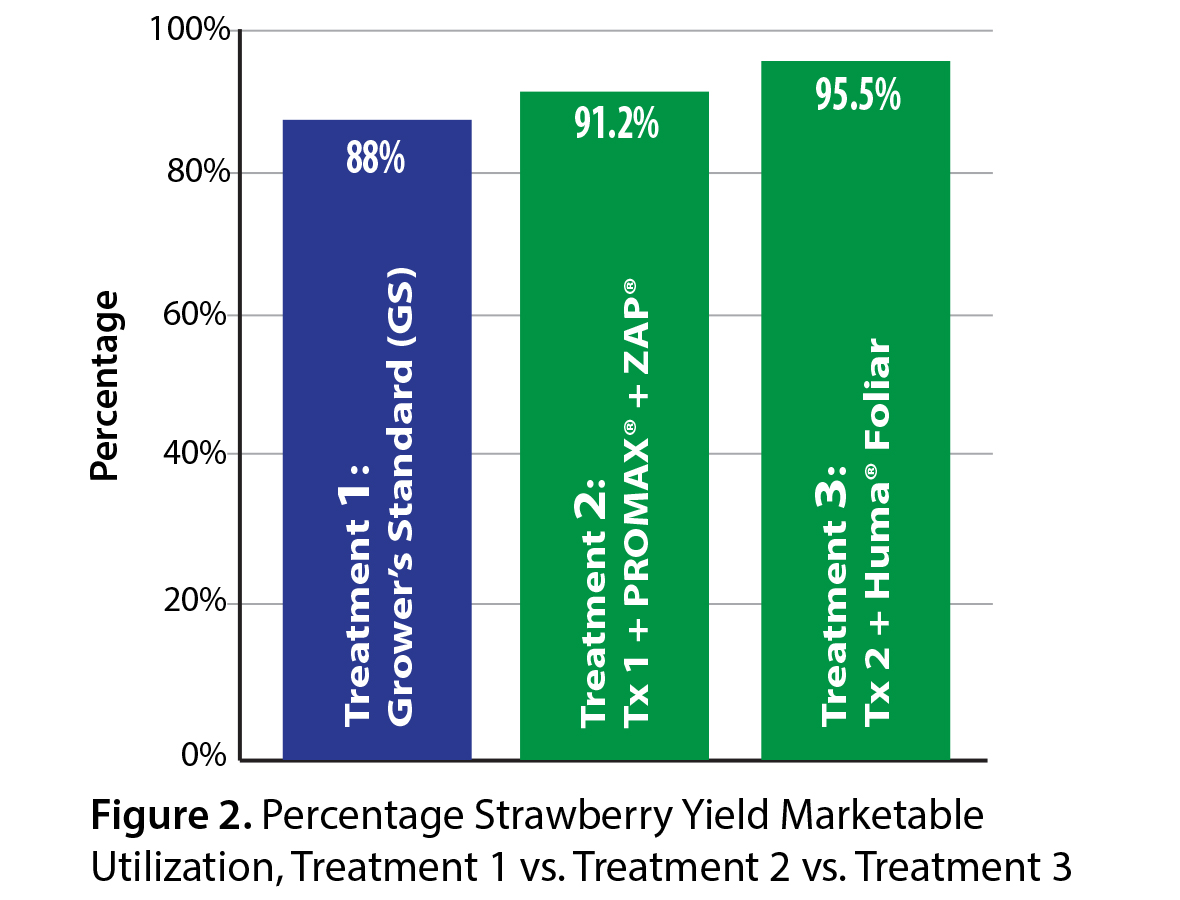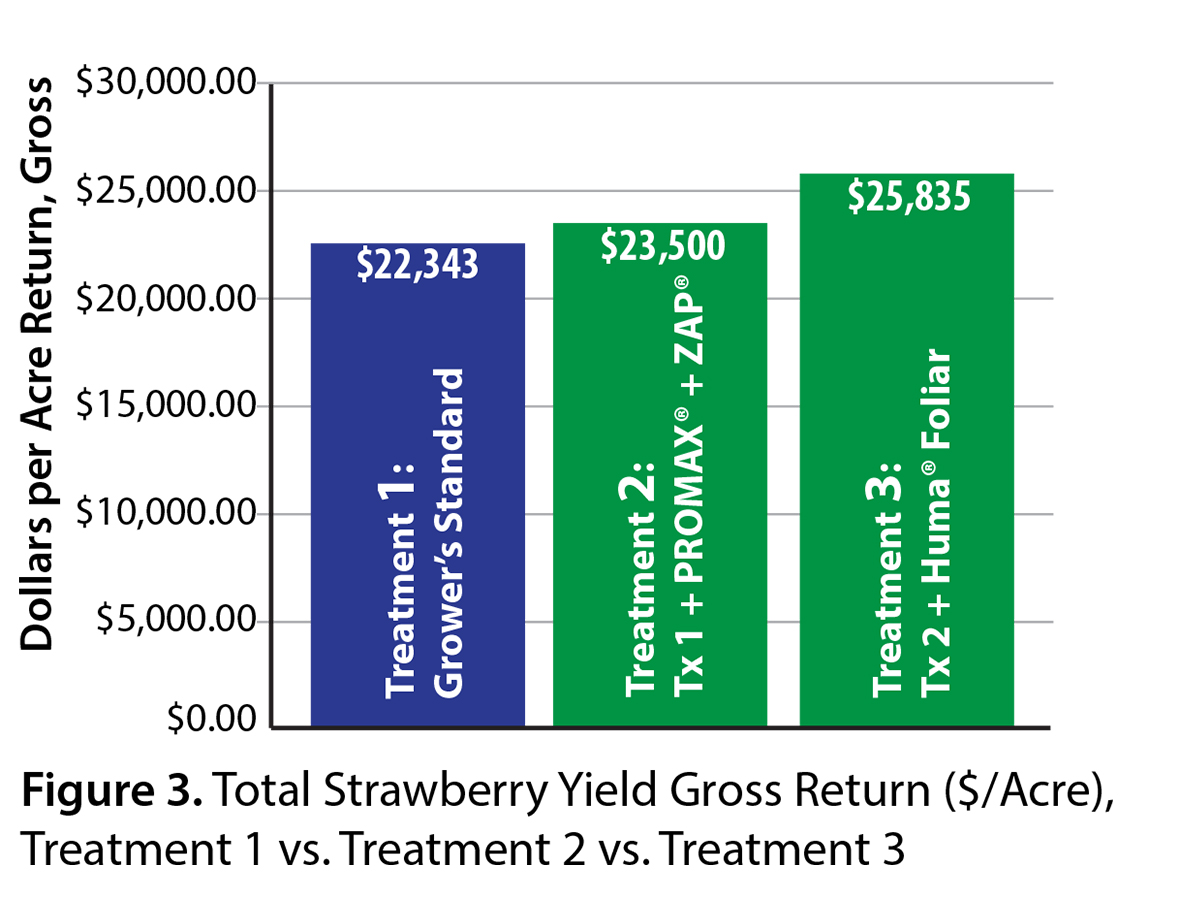Objective
This field trial assessed the effects of Promax® and Zap® on top of fumigation—plus additional foliar applications of 4 Huma® fertilizer products—on the yield of Portola strawberries when compared with the grower’s standard crop nutrition program.
Materials & Methods
This trial was set up in a complete randomized-block design conducted during the growing season of October 9, 2017, through June 18, 2018, in Ventura County, Calif. Three treatment programs were compared: Treatment 1 was the grower’s standard fumigation and nutrition program of controlled-release fertilizer applied at planting and in-season applications of N-P-K; Treatment 2 was the grower’s standard plus Promax® (biopesticide) applied at 2 gal/acre at preplant then 1 gal/acre monthly thereafter, and Zap® (for feeding the native beneficial soil microbial balance) applied at 1 gal/acre preplant and at 1/gal/acre every 10–14 days after each Promax® application; and Treatment 3 was Treatment 2 plus foliar applications of 1 pint/acre each of Huma® Vitol®, Breakout®, Calcium, and Lucky 7® every 2 weeks during the growing season for a total of 12 applications of each product.
Treatment Summary:
Treatment 1: Fumigation plus Grower’s Standard Fertilizer Treatment
2: Treatment 1 plus Huma® Promax® and Zap® Treatment
3: Treatment 2 plus 4 Huma® Foliar Nutrients
The strawberries were picked 16 times during the growing season, and measurements were made at each picking with results calculated cumulatively of trays picked per acre, marketable utilization of berries, yield (by weight), and price paid per yield.
Results
As can be seen in Figure 1, Treatment 3 (Huma®) produced the most trays of picked strawberries (10 lb equivalent), with a cumulative total of 3,030 trays per acre equivalent, compared with Treatment 1 (Grower’s Standard) of 2,651 trays per acre, a 14% yield increase for Huma®.
Figure 2 shows the daily market utilization for the berries picked during the season (the percentage of marketable berries from the total weight of berries picked), with Treatment 3 (Huma®) resulting in 95.5% utilization and Treatment 1 (Grower’s Standard) reaching only 88%. This represents over 561 additional pounds of berries per acre that can be sold due to Treatment 3 (Huma®).
In addition, Treatment 3 strawberries individually weighed, on average, 5% more than Treatment 1 strawberries. No problems with phytotoxicity (leaf burn) were noted with the use of any of the foliar-applied Huma® products.

Figure 1. Total Strawberry Trays Yield per Acre, Treatment 1 vs. Treatment 2 vs. Treatment 3.

Figure 2. Percentage Strawberry
Marketable Yield, Treatment 1 vs.
Treatment 2 vs. Treatment 3.

Figure 3. Total Strawberry Yield Gross Return Acre), Treatment 1 vs. Treatment 2 vs. Treatment 3.
Conclusions
Based on the data collected in this trial, the 2 Huma® treatment programs resulted in both higher yields and a higher percentage of marketable yield. Treatment 3 resulted in an overall yield increase of 14% over the Grower Standard. This yield increase for Treatment 3 resulted in a return-to-the-farm increase of almost $3,500 more per acre, a 15% increase in dollars back to the farm (see Figure 3). Factoring in the cost of the additional Huma® products applied to achieve this yield increase, the return on investment (ROI) was calculated to be over $2,500/acre (289%).

